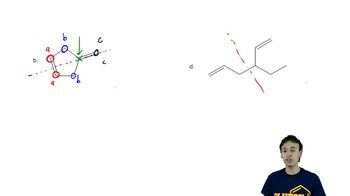Textbook Question
Draw the 13C NMR spectrum of each molecule in Assessment 15.48.
(b)
 Verified step by step guidance
Verified step by step guidance Verified video answer for a similar problem:
Verified video answer for a similar problem:



 4:m
4:mMaster 13C NMR General Features with a bite sized video explanation from Johnny
Start learning